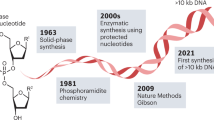Abstract
A US District Court has called into question the validity of patents directed to DNA sequences and diagnostic methods based on such sequences. If upheld on appeal, the District Court ruling will severely impair the ability of universities and the biotech industry to patent their inventions, raise capital and maintain share prices. Since the reasoning could equally be applied to novel drugs based on naturally occurring compounds, the decision should also be of concern to the pharmaceutical industry in general.
In order to be patentable in the US, an invention must be new, non-obvious and useful. However, these were not the criteria at issue in the landmark AMP v. USPTO decision. Instead, the case hinged on the ‘statutory subject matter test’ of Section 101 of the US Patents Act and the claims at issue concerned isolated DNA, complementary DNA and oligonucleotide DNA probes/primers, which Judge Sweet found to be either “products of nature” or “not markedly different from products of nature” and so unpatentable. As a result, it seems quite possible that in the future it will be necessary in US patent applications to claim DNA sequences more narrowly than simply as ‘isolated DNA’. This is in direct contrast to the situation in Europe where isolation is sufficient for patent applications.
Similar content being viewed by others
References
European Patent Office. Convention on the grant of European patents (European Patent Convention). 13th ed. Munich: European Patent Office, 2007
Association for Molecular Pathology et al. v. United States Patent and Trademark Office et al. Decision of the US District Court for the Southern District of New York of 29 March 2010 [online]. Available from URL: http://www.patents4life.com/wp-content/uploads/2010/03/MyriadDecision.pdf [Accessed 2010 Apr 20]
United States Code Title 35-Patents [online]. Available from URL: http://www.uspto.gov/web/offices/pac/mpep/consolidated_laws.pdf [Accessed 2010 Apr 20]
Diamond v. Chakrabarty. Decision of the US Supreme Court, 447 U.S. 303 (1980)
The American Wood-Paper Co. v. The Fibre Disintegrating Co. Decision of the US Supreme Court, 90 U.S. (23 Wall.) 566 (1874)
American Fruit Growers, Inc. v. Brogdex Co. Decision of the US Supreme Court, 283 U.S. 1 (1931)
Funk Bros. Seed Co. v.Kalo Innoculant Co.Decision of theUS Supreme Court, 333 U.S. 127 (1948)
In re Bilski. Decision of the US Court of Appeal for the Federal Circuit, 545 F.3d 943 (2008)
State Street Bank and Trust Company v. Signature Financial Group, Inc. Decision of the US Court of Appeal for the Federal Circuit, 149 F.3d 1368 (1998)
Acknowledgements
No sources of funding were used to assist in the preparation of this article. The author has no conflicts of interest that are directly relevant to the content of this article.
Author information
Authors and Affiliations
Corresponding author
Rights and permissions
About this article
Cite this article
Cockbain, J. Gene Patents are Under Attack in the US. Pharm Med 24, 161–163 (2010). https://doi.org/10.1007/BF03256812
Published:
Issue Date:
DOI: https://doi.org/10.1007/BF03256812




